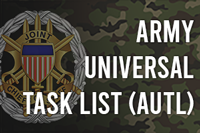Collective Training Sustainment Resources
To contact the Collective Training Development Division (CTDD) directly, please click here.
-
Mission Essential Task Lists (METL) - Standardized Mission Essential Task Lists (METL) are the Headquarters, Department of the Army official listings of the fundamental tasks that units are designed to perform in any operational environment. Standardized METL consists of: Mission Essential Tasks (METs) - expressed as Collective Tasks, and Supporting Collective Tasks - expressed as T&EOs. Click to view the METL viewer provided by Army Training Network. Note: Access requires CAC credentials.
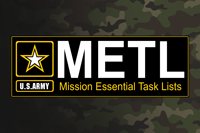
Note: Access requires CAC credentials.
-
Sustainment Units Mission Essential Task Lists (METL) via CASCOM Portal: - Standardized Mission Essential Task Lists (METL) are the Headquarters, Department of the Army official listings of the fundamental tasks that units are designed to perform in any operational environment. Standardized METL consists of: Mission Essential Tasks (METs) - expressed as Collective Tasks, and Supporting Collective Tasks - expressed as T&EOs. Note: Access requires CAC credentials.

Note: Access requires CAC credentials.
-
Combined Arms Training Strategies (CATS) ATN Viewer - CATS are the Army's overarching strategy for focusing on near term unit training or on identifying future unit training strategies and requirements. The authoritative source for accesssing CATS is through the Digital Training Management System (DTMS). Because DTMS users must have approval for accesss, DTMS CATS data can also be pulled by the Army Training Network (ATN). Note: Access requires CAC credentials.

-
Sustainment Unit Combined Arms Training Strategies (CATS) via CASCOM Portal - CATS are the Army's overarching strategy for focusing on near term unit training or on identifying future unit training strategies and requirements. Note: Access requires CAC credentials.

Note: Access requires CAC credentials.
-
Digital Training Management System (DTMS) - DTMS is a web-based, Commercial Off The Shelf (COTS) software product tied to a relational database and customized IAW FM 7-0. Optimized for use at Brigade and below, DTMS provides the ability to plan, resource and manage unit and individual training at all levels. Note: The DTMS site requires CAC credentials.
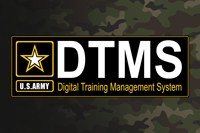
-
CALL 25-761: Home Station Training Handbook - This handbook offers a thorough overview of Army training management, covering the key principles and best practices that underpin successful training. It provides guidance on planning, preparing, and executing training, as well as assessing and evaluating its effectiveness. The handbook also addresses the importance of safety, risk management, and resource allocation, and offers practical advice to how to overcome common challenges and obstacles. Note: Access requires CAC credentials.

-
Training Management at the Company Level - Click to accesss the Training Management at the Company Level Individual Critical Task List (ICTL). Target Audience: Applies to all leaders at Company level and below to include officers, warrant officers, noncommissioned officers, Soldiers, Army DA Civilians, contractors, and trainers.
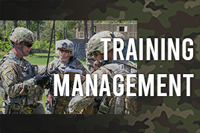
-
Platoon Leader's Guide to Training Management - This guide provides platoon and below leaders with effective training techniques and procedures in support of the Army's training doctrine, FM 7-0 Training (2021). Before reading this guide, leaders must be familiar with the principles, processes and procedures described in FM 7-0.
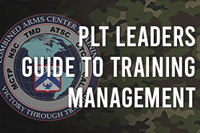
-
Training Exercises - Training Exercises: Training exercises are scenario driven, multiechelon, multi-task training events. When an exercise cannot be conducted in a live environment, the commander considers using virtual, constructive, or mixed training environments to achieve training objectives (FM 7-0, Appendix F). Always refer to Army Publication Directorate (APD) or ATN to confirm the most current publication. Note: Access requires CAC credentials.
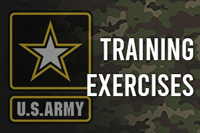
Note: Access requires CAC credentials.
-
Soldier Support Institute (SSI) - Access Collective Training resources specific to the Soldier Support Institute (SSI), which is home to the Adjutant General (AG) and Finance (FI) schools. Resources include the SSI Learning Resource Center (LRC), Warfighter Training Support Packages, the Finance Training Portal, and more.
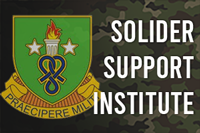
-
References - A collection of references pertinent to Collective Training, including ADP 7-0, Training Strategies, and Training Circulars.
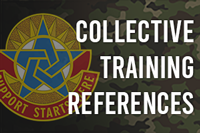
-
Tools - A collection of tools pertinent to Collective Training, including Graphic Training Aids (GTA), Standards in Training Commission (STRAC) , and the Central Army Registry.
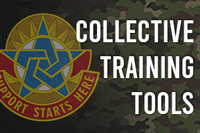
-
Command Post Exercise - Functional (CPX-F) - For inquires, questions concerning historical Command Post Exercise Functional (CPX-F) Training Support Packages (TSP), please contact the CASCOM G-3/5/7 Collective Training Development Division by clicking here.
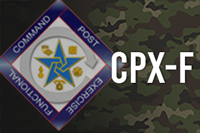
-
Army Universal Task List (AUTL) - Published quarterly, this list is derived from the Training Development Capability (TDC) data base. The AUTL is a living document that is ever changing as tasks are added, updated, or deleted as needed by proponents. To ensure you have the most current data use the task number listed in the AUTL to conduct a search in either DTMS or ATN (atn.army.mil). The current Army Universal Task List (AUTL) is located via the Joint Electronic Library Plus (JEL+) portal, within the "Service Task List" section. Note: Access requires CAC credentials.
